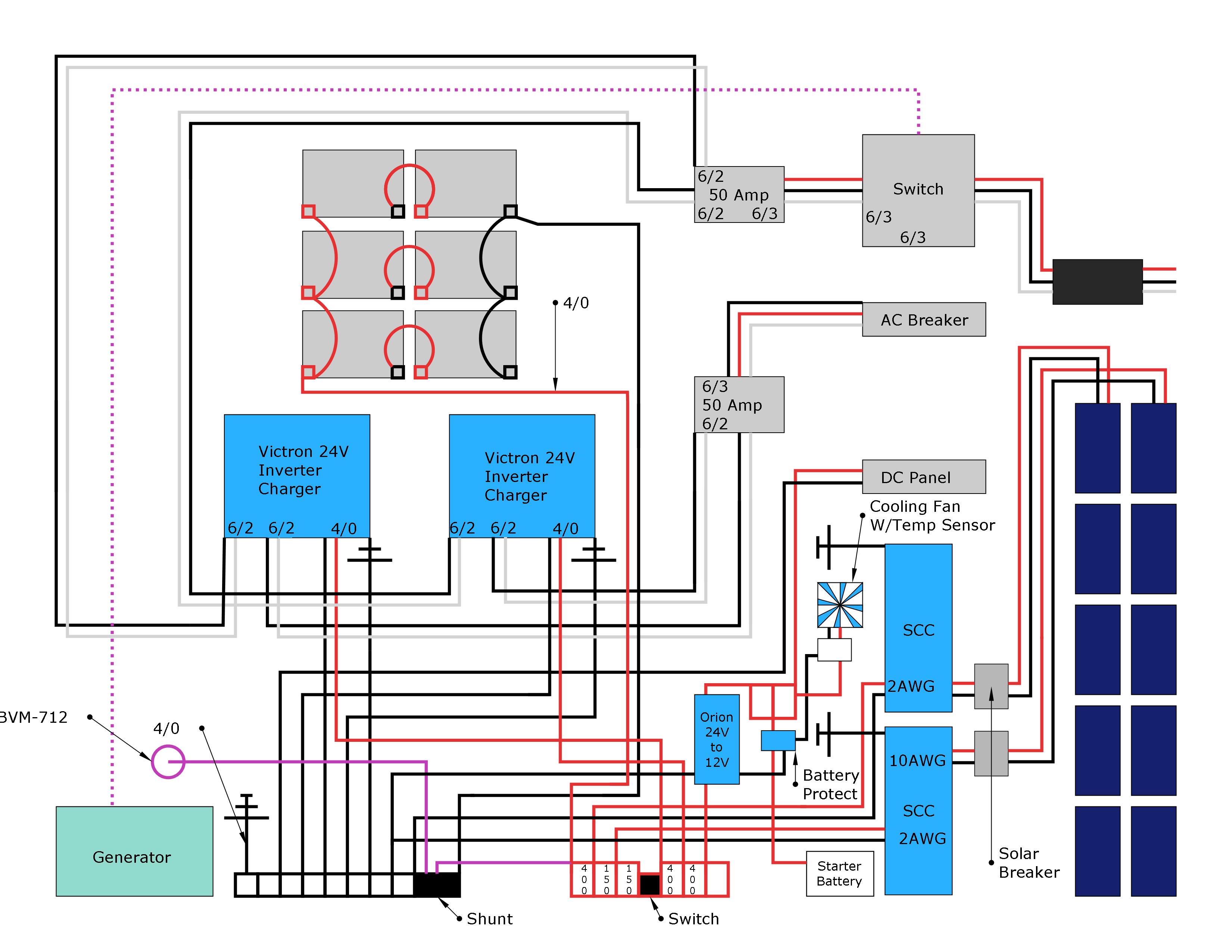So a 50amp RV shore outlet is actually two 50amp connections for a total of 100amps right? So when I program my multiplus inverters, is my input current limit 100amps meaning I program 50amp or is it 50amp and I program 25amp? Or am I totally misthinking this because it mentions "per phase" and a parallel system is single phase so I should just set it to 100amp... or is that 50amp...
I'm following the following information from the Parallel and three phase VE.Bus systems document
The following settings need to be made in the master of each phase:
Inverter output voltage
Input current limits
(the effective input current limit is the setted limit multiplied by the number of units per phase. For example, setting a 10A limit with VEConfigure in a system with two units per phase results on a 20A limit for that phase. Being able to set a different limit per phase allows for maximum configurability.
Also when I'm looking at the maximum charge current, if my total charge limit is 70amp I would set it to 35amp?

